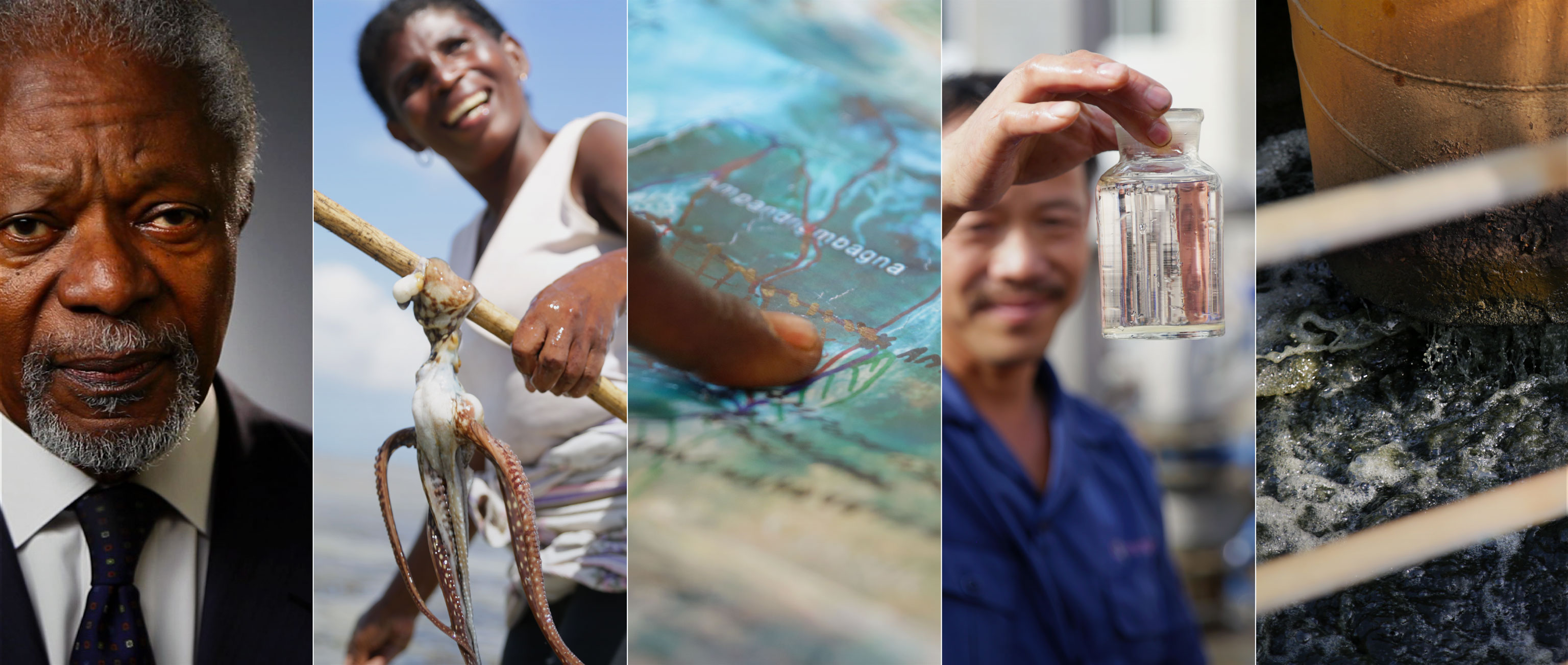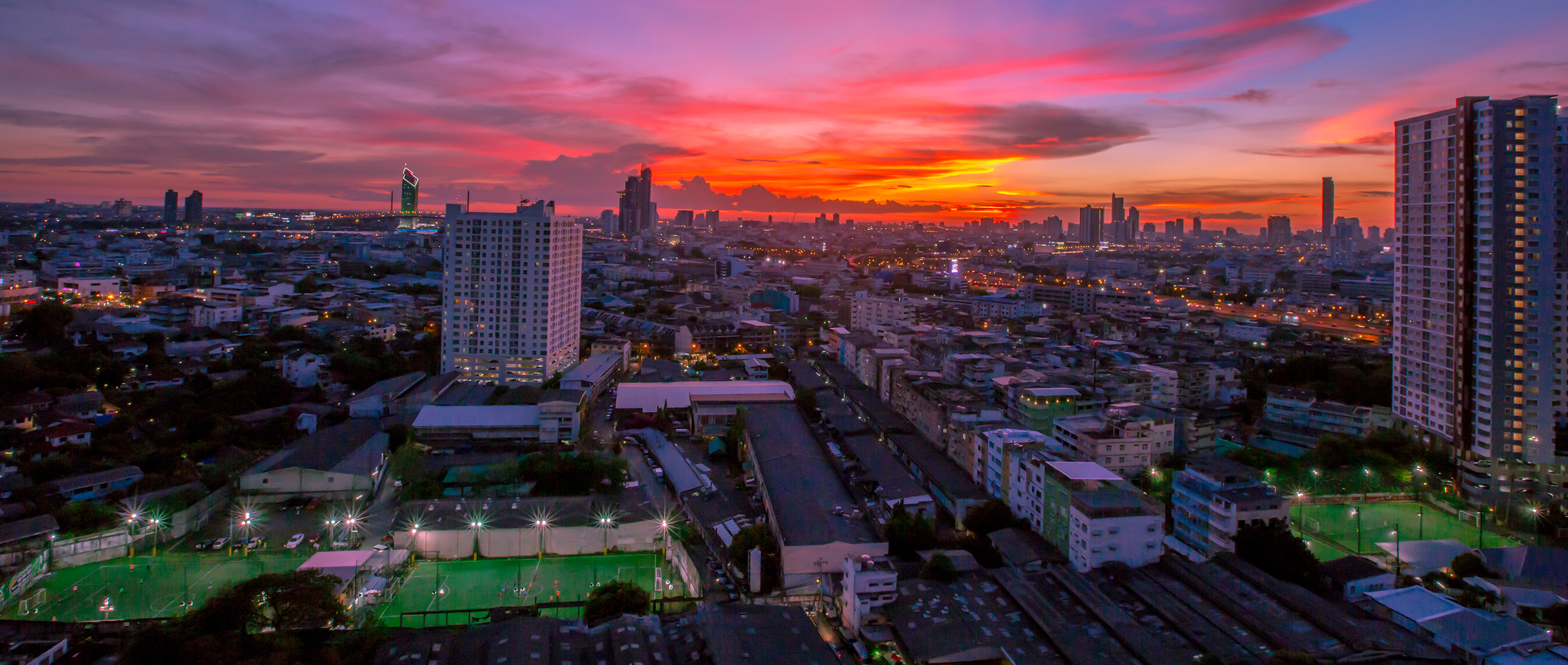The Skoll Foundation Approach to Visual Storytelling
Invest. Connect. Celebrate. That’s the Skoll Foundation mission in a nutshell, and the ‘celebrate’ part of that triad is where Skoll’s storytelling resources take center stage with the medium of video. Gabriel Diamond has helmed the Skoll Foundation filmmaking efforts for nearly five years, crafting scores of short films in that time. “People are really good at telling their own stories,” he says. “Mostly it’s about us getting out of the way, and about me putting the camera in the right place to capture those moments.”
Gabriel sat down with Zach Slobig to chat about the craft and to give a behind-the-scenes sense of these three striking Skoll Foundation films: Kofi Annan The World I am Working to Create, Blue Ventures, and Lifting the Veil on Pollution in China. What follows are some excerpts from our conversation.
On contextualizing:
“I always include some verité moments of the work on the ground, with the actual people doing the work, interacting. The unique value add with film is to be able to give a sense of what the actual work looks and feels like, where the rubber meets the road. Often it’s about showing ideas being spread and people supporting each other, even just a few moments of a conversation between people. Seeing it and hearing it like a fly on the wall conveys volumes.”
On interviewing:
“I film a two hour conversation with the social entrepreneur to build the overall story. Our films typically follow a problem>innovation>impact>potential arc, where I dig into the vision or inspirational side of why they do what they do. I also ask a lot of really boring questions, like if I were to travel and see the work on the ground, what would I see? What does the typical village look like? Who’s the typical person who you’re working for? What does their life look like? What do they think when you first approach these communities? How can you be sure it’s not imposing some other value that they don’t share? How do you know it’s working? What are some of the biggest misconceptions you encounter? What gives you hope? What’s next?” I typically take on a curious/blank slate attitude and come up with a lot of questions on the fly to keep things feeling spontaneous.”
On translating change, visually:
“The ‘holy grail’ moment that I try to capture out in the field are the ‘aha!’ moments. A lot of the time this is around changing mindset, so it’s really hard to capture that change. For each film, it’s unique to where you are. How is that going to look? So, trying to set up situations where you get at that ‘aha!’ moment for the people is great.
Capturing some sort of before and after imagery in a non-cheesy way is also incredibly valuable. One of my favorite moments of that was from this short about FES in India or Slum Dwellers International.
I want audiences to walk away after watching these films saying, ‘Why didn’t I think of that? What a good idea. I’m glad somebody’s doing it.’”
On the Skoll Foundation-style ‘straight to camera’ interview:
“There’s something about that look of talking straight to the camera. It’s just so immediate, and intimate and direct. I always wondered how Errol Morris got that effect. When I realized that there was an accessible, affordable low-budget solution with the EyeDirect, I jumped all over it and I’ve never gone back. It’s a collapsible black box with a one way mirror that allows the interviewer and interviewee to maintain direct eye contact with each other while the interviewee is effectively looking straight into the camera. My travel kit is very compact and minimal, but I still find room to bring the EyeDirect.”
On getting gold from Kofi Annan:
“When Kofi Annan came to the Skoll World Forum, we weren’t sure if we were going to have time to interview him. His schedule was very full, and he was flying in just prior to his speech and flying out right after. So I asked the one question that we ask when we have one question: What is the world that you’re working to create?
I love this question because it forces the interviewee into a kind of creative visionary mindset, where they often end up inspiring themselves as they speak. Kofi answered that question in his thoughtful, full-of-gravitas manner. I remember my heart slowing and beating more deeply, and feeling like I was in the presence of someone truly great. I still find much of that feeling is conveyed through the short film, especially set against “Window” from The Album Leaf who generously donated the track for our short.”
On filming in Madagascar with Blue Ventures:
“The thing with that area was it was just so beautiful everywhere. The organization had been in that community for so long, and there was so much trust and mutual regard that I felt very, very welcomed filming everywhere. The wonderful thing about so many of the films I create with Skoll Foundation is that the organizations have built years of trust and relationships with the communities where they work, so most of the time, I can show up a stranger, but am welcomed and given access to film like an old friend, so I am able to hit the ground running in a really productive way.
I loved playing with all the perspectives in that film, and was lucky to have over a week for filming. From shifting the GoPro underwater to above water following an octopus being dragged, to drone shots, to a harrowing trip on a pirogue (the tiny sail boats used for fishing) the trip was a cinematographer’s dream.”
On filming in factories in China:
“That was the very first time Ma Jun, founder of the Institute of Public & Environmental Affairs (IPE), had ever been permitted to have a camera inside a factory, so it was a very special moment to capture. That was a tipping point in their work, to be given that level of access into famously secret Chinese factories.
From what I learned, it’s the government’s job to protect the environment, but it’s less expensive for companies to simply pay the penalty fee for pollution violations rather than change their practices. So IPE tracks the violations and shares them with the western companies buying the products who then pressure the factories to comply. That’s the only way to motivate the factories to clean up their practices. The factories that work with IPE to help them get into compliance.
So they are in a really unique position as both a thorn in the side of the factories, an advisor and a trusted source for the buyers, and they help the government with their charge of protecting the environment. It’s impressive how many levels they are able to work on simultaneously, especially in a country like China.”



